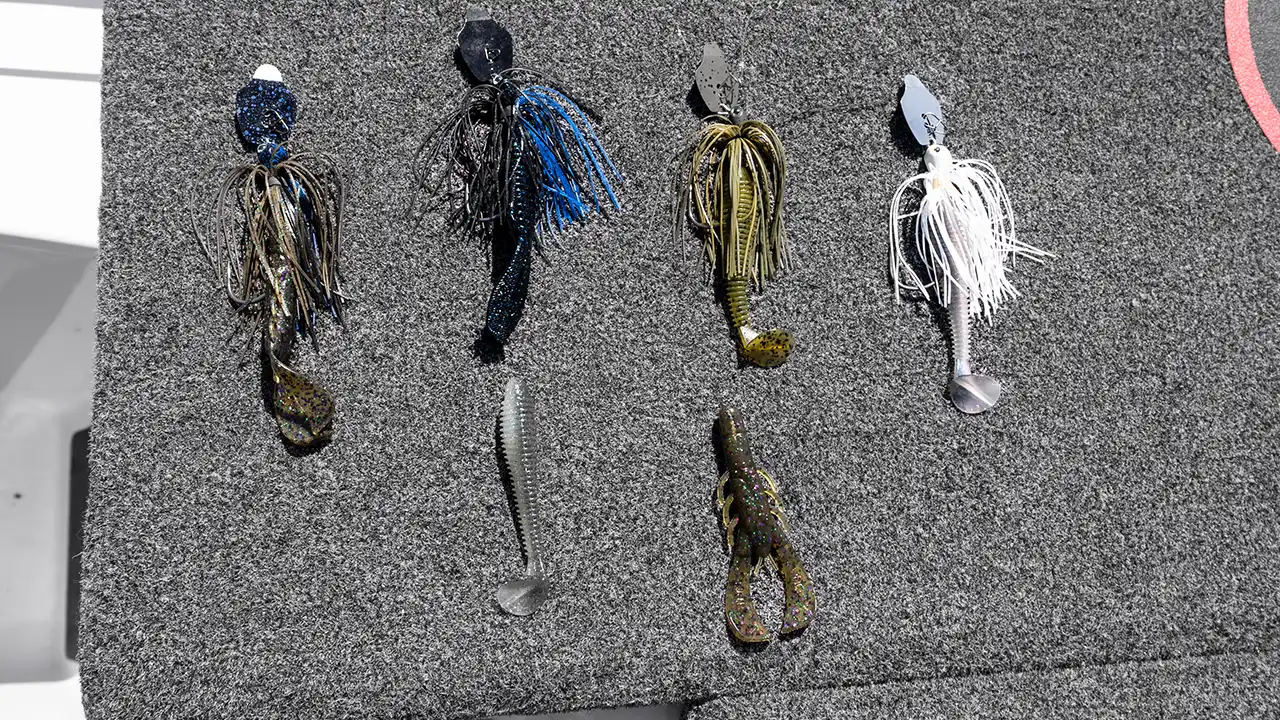As pro bass angler Scott Suggs attests, the new forward-facing sonar-optimized tactics are great, but casting and winding bladed jigs still excels for bass throughout the seasons and country. Suggs discusses how to fish bladed jigs, emphasizing when to use different lure weights based on the cover, depth, and season you’re fishing.
FEATURED TACKLE (retail links)
- BLADED JIG – Strike King Tungsten Thunder Cricket Jig, color – Bruiser: Buy at Bass Pro Shops | Buy at Tackle Warehouse
- TRAILER – Strike King Rage Scounbug, color – Candy Craw: Buy at Bass Pro Shops | Buy at Tackle Warehouse
- ROD – Lew’s Team Signature Series Casting Rod, 7’3” Medium Heavy – Fast: Buy at Bass Pro Shops | Buy at Tackle Warehouse
- REEL – Lew’s Custom Pro SLP Casting Reel: Buy at Tackle Warehouse
- LINE – Strike King Contra Fluorocarbon Fishing Line, 15- to 17-pound: Buy at Tackle Warehouse
CHOOSING THE RIGHT WEIGHT
- The Lighter Approach: Suggs uses a 3/8-oz bladed jig when fishing in shallow or cold water. In both cases, it’s important to be able to slow your presentation and control the running depth, which a 3/8-ounce bladed jig affords.
- Mid-Range Mastery: When fishing in water depths of 4-5 feet, especially in colder temperatures, a 1/2 oz bladed jig strikes the right balance. It sinks just enough to get to depth but is still easy enough to adjust running depth and fish effectively around deeper cover like grass, brush, and rock.
- Going Heavy: Suggs reaches for heavy bladed jigs in deeper waters or when the fall-feeding frenzy kicks in. He likes 5/8 to 3/4 oz bladed jigs as the heavier weight gets the bait to depth more quickly and stays down better during a fast retrieve.
HOW TO FISH BLADED JIGS IN DIFFERENT HABITAT
Like crankbait fishing, bladed jigs shine when fished in and around cover, with bait deflections off cover driving a good percentage of strikes. Suggs always allows his bladed jig to sink to the bottom before starting the retrieve. He then uses a combination of rod twitches and reel speed changes to deflect the bait and pop it free from potential snags – this is the key move that triggers bites. Maintaining a consistent retrieval speed while occasionally pausing draws reaction strikes when fishing in open water.
SUGGS PRO TIPS
- Always start with the lure at the bottom to cover the water column effectively.
- Adjust your reel speed based on the water temperature; slower in cold water, faster in warmer.
- Select your reel speed based on water temperature and fish activity level. Suggs prefers a slower reel in cold conditions (6.1 range), a mid-speed reel as a good all-arounder (7.1), and a fast 8.1 or greater when seeking the quickest retrieval speed to trigger strikes.
Bladed jigs are a powerful tool in any angler’s arsenal, offering unmatched versatility across various conditions. You can significantly increase your catch rate by carefully selecting the appropriate weight and tailoring your retrieval technique. Remember, the key to bladed jig success lies in its ability to mimic prey effectively, so continually adapt your approach to the prevailing conditions and bass behavior.












